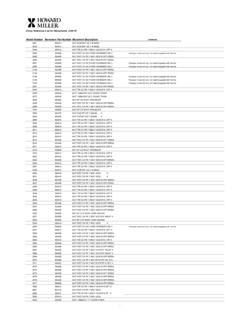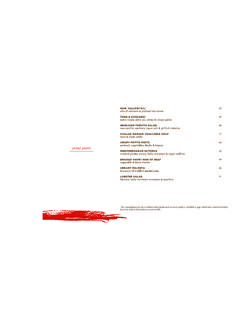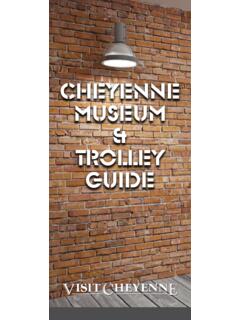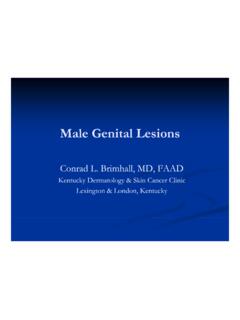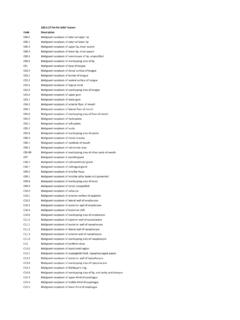Transcription of CE 110 - A Guide to Clinical Differential Diagnosis of ...
1 1 Crest + oral -B at Guide to Clinical Differential Diagnosis of oral Mucosal LesionsContinuing EducationBrought to you byCourse Author(s): Michael W. Finkelstein, DDS, MS; Emily Lanzel, DDS, MS; John W. Hellstein, DDS, MSCE Credits: 4 hoursIntended Audience: Dentists, Dental Hygienists, Dental Assistants, Dental Students, Dental Hygiene Students, Dental Assistant StudentsDate Course Online: 06/04/2002 Last Revision Date: 03/26/2020 Course Expiration Date: 08/25/2023 Cost: FreeMethod: Self-instructionalAGD Subject Code(s): 730 Online Course: : Participants must always be aware of the hazards of using limited knowledge in integrating new techniques or procedures into their practice.
2 Only sound evidence-based dentistry should be used in patient of Interest Disclosure Statement The late Dr. Finkelstein reported no conflicts of interest associated with this course when he last updated it. The staff at P&G expresses our condolences regarding the loss of Dr. Finkelstein on December 28, 2013. He was a passionate advocate for dental education who reached tens of thousands of students and patients with his knowledge of oral pathology that spanned a career of over 30 years at the University of Iowa. Dr.
3 Lanzel and Dr. Hellstein report no conflicts of interest associated with this primary goal of this course is to help you learn the process of Clinical Differential Diagnosis of diseases and lesions of the oral mucosa. The first step in successful therapeutic management of a patient with an oral mucosal disease or lesion depends upon creating a Differential Diagnosis . This course also includes both an interactive and downloadable decision tree to assist in the + oral -B at Contents Overview Learning Objectives Part I: Introduction to Clinical Differential Diagnosis How to Use the Decision Tree Benign and Malignant Tumors Part II.
4 Surface Lesions of oral Mucosa White Surface Lesions Surface Debris White Lesions White Lesions Due to Subepithelial Change Pigmented Surface Lesions of oral Mucosa Localized Pigmented Surface Lesions of oral Mucosa Extravascular Blood Lesions Melanocytic Lesions Tattoo Vesicular-Ulcerated-Erythematous Surface Lesions of oral Mucosa Hereditary Diseases: Epidermolysis Bullosa Autoimmune Diseases Idiopathic Diseases Viral Diseases Mycotic Diseases-Candidosis (Candidiasis) Part III: Soft Tissue Enlargements of oral Mucosa Reactive Soft Tissue Enlargements Soft Tissue Tumors Benign Epithelial Tumors of oral Mucosa Benign Mesenchymal Tumors of oral Mucosa Benign Salivary Gland Neoplasms of oral Mucosa Cysts of oral Mucosa Malignant Neoplasms of oral Mucosa Part IV: Summary of Clinical Features of oral Mucosal Lesions Table 1.
5 White Surface Lesions of oral Mucosa Table 2. Localized Pigmented Surface Lesions of oral Mucosa Table 3. Vesicular-Ulcerated-Erythematous Surface Lesions of oral Mucosa Table 4. Soft Tissue Enlargements Table 5. Benign Epithelial Tumors Table 6. Benign Mesenchymal Tumors Table 7. Benign Salivary Gland Tumors Table 8. Soft Tissue Cysts Course Test References About the AuthorsOverviewOral pathology is a visual specialty, and Clinical images can facilitate your learning the Clinical features of oral mucosal lesions.
6 Several atlases are recommended in the Additional Resources section of this course. The textual material in this course is designed to be used with The oral Pathology Image Database (Atlas). Please note that lesions or diseases discussed in the textual material that have Clinical images available on The oral Pathology Image Database are designated with *.Learning ObjectivesUpon completion of this course, the dental professional should be able to: Classify oral lesions into surface lesions and soft tissue enlargements using a decision tree (flowchart).
7 Describe the Clinical features that are characteristic of each class of oral mucosal lesions in the decision tree, including: White surface lesions - epithelial thickening, surface debris, and subepithelial change Generalized pigmented surface lesions Localized pigmented surface lesions - intravascular blood, extravascular blood, melanin pigment, and tattoo Vesicular-ulcerated-erythematous surface lesions - hereditary, autoimmune, viral, mycotic, and idiopathic Reactive soft tissue enlargements of oral mucosa Benign tumors of oral mucosa - epithelial, mesenchymal.
8 And salivary gland Malignant neoplasms of oral mucosa Cysts of oral mucosa Describe the characteristic or unique Clinical features of the most common and/or important diseases of the oral mucosa. Perform a step-by-step Clinical Differential Diagnosis , using the decision tree, for patients with oral mucosal I: Introduction to Clinical Differential DiagnosisDiagnosing lesions of the oral mucosa is necessary for the proper management of patients. Clinical Differential Diagnosis is the cognitive process of applying logic 3 Crest + oral -B at knowledge, in a series of step-by-step decisions, to create a list of possible diagnoses.
9 Differential Diagnosis should be approached on the basis of exclusion. All lesions that cannot be excluded represent the initial Differential Diagnosis and are the basis for ordering tests and procedures to narrow the Diagnosis . Guessing what the one best Diagnosis is for an oral lesion can be dangerous for the patient because serious conditions can be is helpful for clinicians to organize their knowledge of oral pathology using a system that simulates the Clinical appearance of oral lesions. A decision tree is a flowchart that organizes information so that the user can make a series of step-by-step decisions and arrive at a logical conclusion (Figure 1).
10 How to Use the Decision TreeTo use the decision tree, the clinician begins at the left side of the tree, makes the first decision, and proceeds to the right. The names of individual lesions are listed on the far right of the tree. Any lesion or group of lesions that cannot be excluded becomes part of the Clinical Differential first decision to make when using the decision tree is whether the lesion is a surface lesion or soft tissue lesions consist of lesions that involve the epithelium and superficial connective tissue of mucosa and skin.
